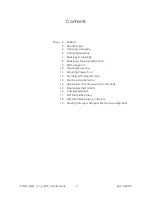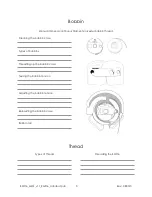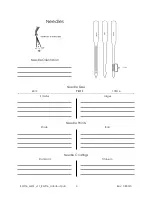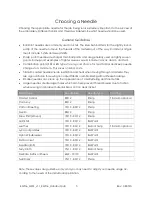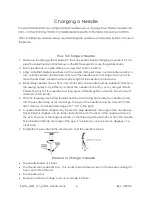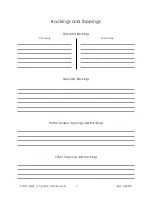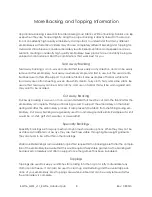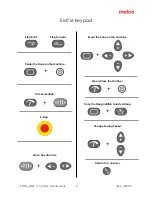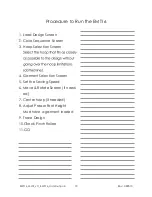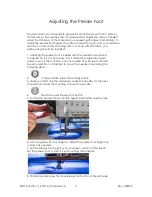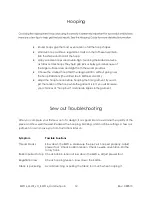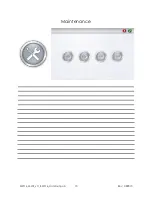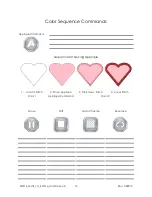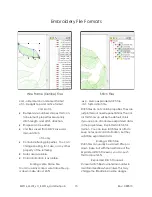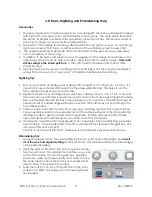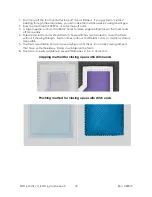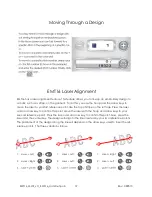
EMT16_MOS_v11_EMT16_Handout.pub 5 Rev: 080515
Choosing a Needle
General Guidelines
Choosing the appropriate needle for the job being run is extremely important to the success of
the embroidery. Different fabrics and threads will determine what needle should be used.
Ball Point needles are commonly used on knits. The idea behind this is for the slightly round-
ed tip of the needle to move the threads of the material out of the way. Common knit gar-
ments include T-shirts and sweatshirts.
Sharp point needles are sharper than ball points and are generally used on tightly woven
goods. Some good examples of tighter weaves would include canvas, denim, and twill.
Combination points (SES or RG types) are a good choice for most fabrics and keep needle
changes to a minimum. This saves on labor costs.
Titanium coated needles create less friction and heat when moving through a material. They
are a good choice for sewing on coated fabrics or embroidering with adhesive backings.
Smaller needles can clean up the appearance of small lettering and fine details.
Larger needles create larger holes which can help prevent thread breaks due to friction
when sewing an abrasive materials like a cotton duck jacket.
Fabric Type
Needle Size
Needle Type
Coating
Coated Fabrics
80/12
Sharp
Titanium optional
Corduroy
80/12
Sharp
Cotton Sheeting
70/10 - 80/12
Sharp
Denim
80/12
Sharp
Dress Shirt (Woven)
70/10 - 80/12
Sharp
Golf Shirt
70/10 - 80/12
Ball Point
Leather
70/10 - 80/12
Ball or Sharp
Titanium optional
Lycra or Spandex
70/10 - 80/12
Ball Point
Nylon Windbreaker
70/10 - 80/12
Ball Point
Satin Jacket
70/10 - 80/12
Ball Point
Sweater (knit)
70/10 - 80/12
Ball Point
Terry Cloth
75/11 - 80/12
Ball or Sharp
Delicate Satins or Sheers
65/9 - 70/10
Ball Point
Twill Caps
75/11 - 80/12
Sharp
Note: These values are guidelines only, and you may need to adjust your needle usage ac-
cording to the needs of the individual application.


